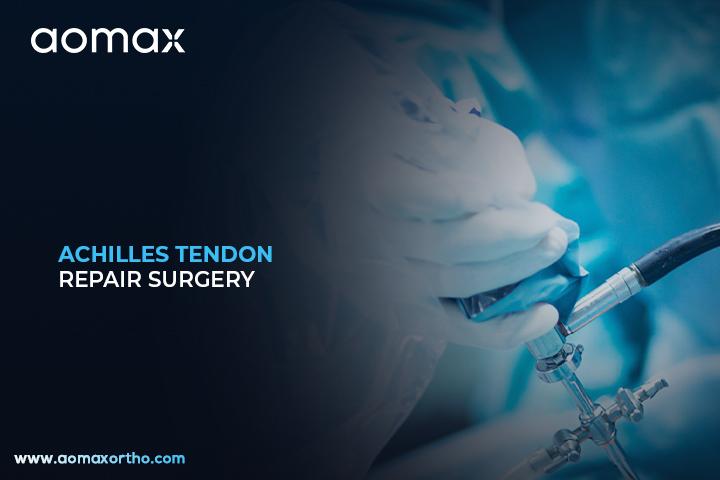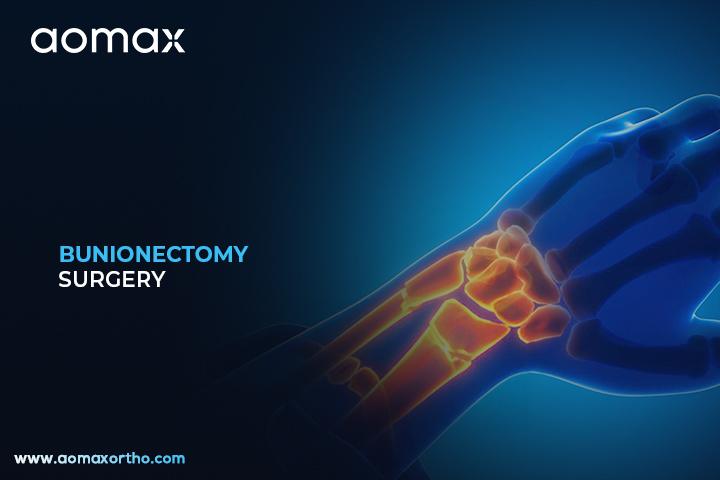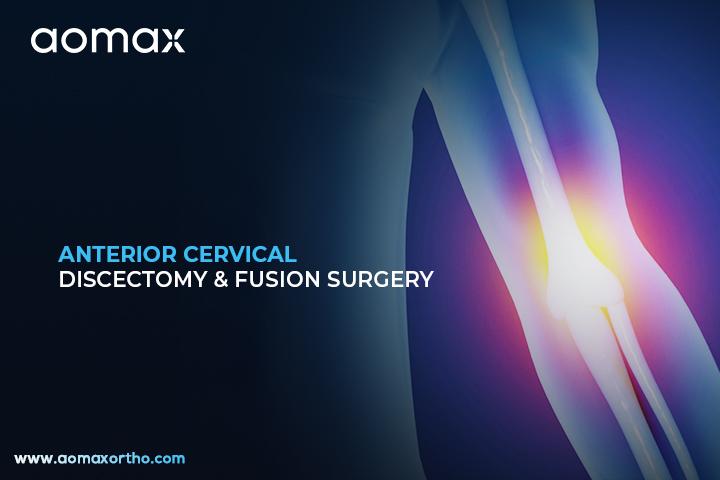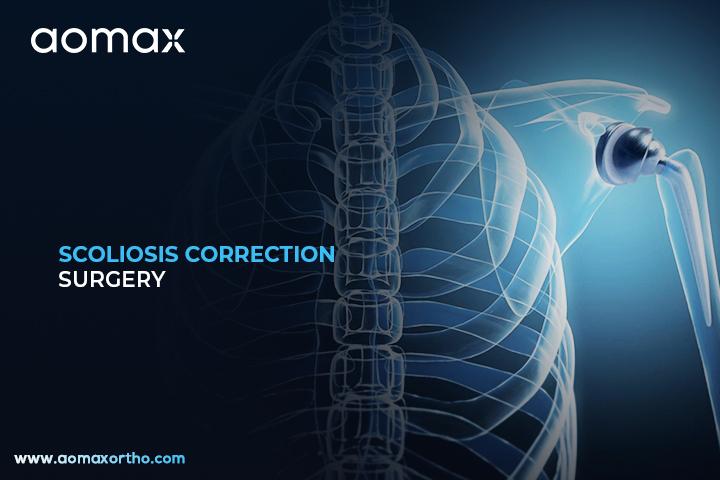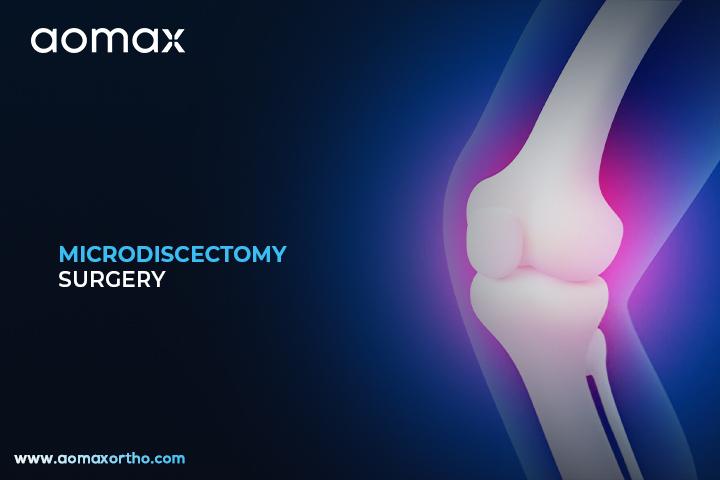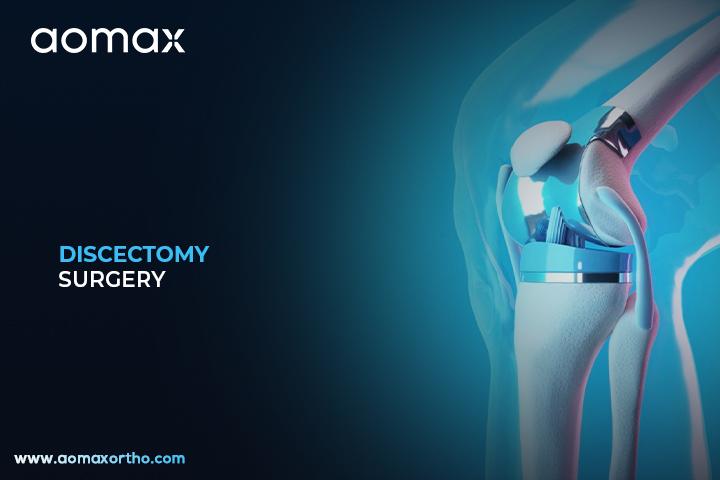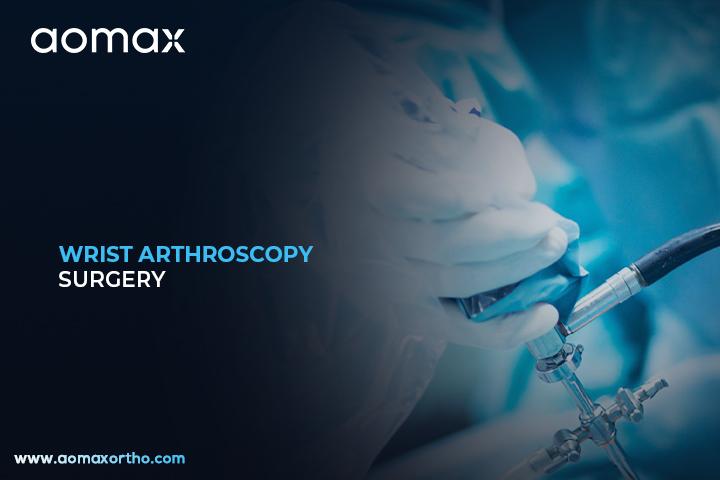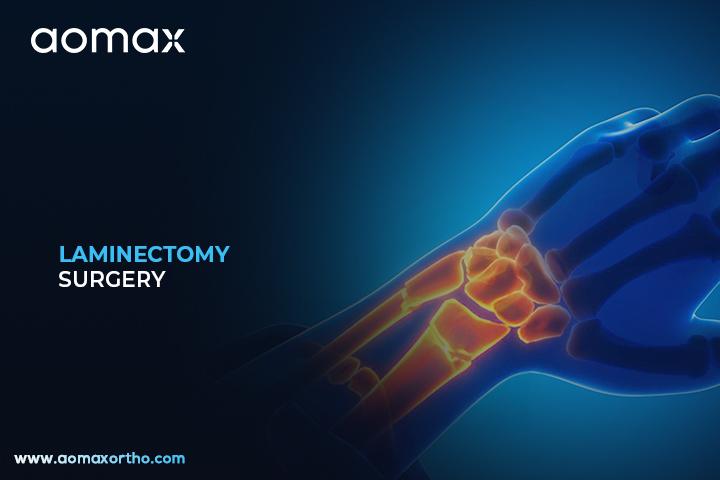Achilles Tendon Repair – Expert Orthopedic Technique for Achilles Restoration
Basics of Achilles Tendon Repair
Achilles tendon repair is a surgery used to fix a torn or ruptured Achilles tendon. The tendon connects the calf muscles to the heel bone and is important for walking and running. This surgery helps restore strength and movement in the ankle.
Surgical Techniques in Achilles Tendon Repair
During Achilles tendon repair, the surgeon makes an incision in the back of the lower leg to reach the torn tendon. Specialized surgical tools are used to stitch and reattach the tendon ends carefully. In some cases, minimally invasive techniques with smaller incisions are performed for faster recovery. Sutures, anchors, and other orthopedic instruments help in securing the tendon firmly. After repair, the foot is positioned to allow proper healing and tendon alignment. This procedure restores function, improves mobility, and prevents long-term complications.
Indications for Achilles Tendon Surgery
- To treat a complete or partial rupture of the Achilles tendon.
- To restore the ability to walk, run, and push off the foot properly.
- To relieve severe pain and weakness caused by tendon injury.
- To prevent long-term disability or loss of mobility in the ankle.
- To repair tendon damage that does not heal with non-surgical treatment.
Surgical Products for Achilles Tendon Procedures
- Arthroscopy Instrument Set – includes tools like arthroscope, scissors, probe, sheath
- Arthroscopy Instruments (Alligator Grasper, Hook Scissor, Punch Forceps)
- Orthopaedic Probe (used to explore tissues, joints during surgery)
- Arthroscopy Sheath Arthroscopy Forceps
- Arthroscopy Shaver System
- Arthroscopy RF Cautery Machine
- Orthopedic Implants / Implants portfolio (for structural support)
- Bone Drill Machine (for preparing bone, tunnels)
- Digital Tourniquet (to control bleeding during surgery)
Global Leaders in Achilles Tendon Repair
- United States
- Germany
- United Kingdom
- Japan
- India
Key Benefits of Achilles Tendon Repair
- Restores strength and stability in the ankle.
- Improves mobility and allows return to normal physical activities.
- Reduces chronic pain and swelling after tendon rupture.
- Prevents improper healing and risk of repeat tendon tears.
- Enhances overall quality of life by supporting active movement.
- Provides long-term functional recovery of the foot and leg.
Aomax Ortho is a globally leading manufacturer of Achilles Tendon Repair related products, trusted by surgeons worldwide for quality and precision.
Get Connected:
+91 98989 50530 | exports@aomaxortho.com | www.aomaxortho.com
Bunionectomy – Corrective Orthopedic Procedure for Bunion Deformities
Basics of Bunion Surgery
A bunionectomy is a surgical procedure used to correct a bunion, which is a bony bump that forms at the base of the big toe. This surgery helps realign the bones, relieve pain, and improve foot function. It is usually recommended when non-surgical treatments fail to provide relief.
Surgical Approach to Correcting Bunions
During a bunionectomy, the surgeon makes an incision near the affected joint of the big toe. The bone is then carefully cut, repositioned, or reshaped depending on the severity of the deformity. Special orthopedic instruments such as bone saws, chisels, and fixation devices like screws or plates are used. Soft tissues around the joint are adjusted to restore proper alignment and reduce tension. The procedure often uses fixation implants to hold the corrected bone in place during healing. Recovery involves bandaging, splinting, and gradual return to walking with the help of supportive devices.
When is Bunion Surgery Needed?
- To correct severe bunion deformity causing pain and discomfort.
- To relieve chronic inflammation and swelling around the big toe joint.
- To improve walking ability and restore normal foot function.
- To prevent further damage to the big toe joint and surrounding toes.
Surgical Instruments and Implants Used in Bunionectomy
- Orthopedic Bone Screws
- Orthopedic Bone Plates
- Osteotome
- PEEK Suture Anchor
- Loop Washer
- Surgical Drill
- Orthopedic Pins and Wires (K-wires)
- Retractors
- Surgical Forceps
- orthopedic Scissors
Global Trends in Bunionectomy Procedures
- United States
- United Kingdom
- Germany
- Japan
- Canada
Advantages of Bunion Surgery
- Corrects the bone deformity and restores toe alignment.
- Reduces chronic pain and discomfort during daily activities.
- Improves balance and walking ability by restoring foot stability.
- Enhances the overall appearance of the foot.
- Prevents progression of joint damage and secondary deformities.
Aomax Ortho is a globally leading manufacturer of Bunionectomy-related orthopedic instruments and implants, trusted by surgeons worldwide.
Get Connected:
+91 98989 50530 | exports@aomaxortho.com | www.aomaxortho.com
Lumbar Decompression – Advanced Orthopedic Surgery for Spinal Nerve Relief
Overview of Lumbar Decompression Surgery
Lumbar decompression surgery is a medical procedure used to relieve pressure on the spinal cord or nerves in the lower back. It is commonly performed when spinal stenosis or other conditions cause nerve compression. This surgery helps reduce pain, numbness, and mobility problems in patients.
Inside the Procedure: Lumbar Decompression
During lumbar decompression surgery, surgeons carefully remove bone, thickened ligaments, or disc material that presses on the spinal nerves. The procedure may include techniques such as laminectomy, laminotomy, or discectomy depending on the patient’s condition. Specialized orthopedic instruments, including retractors, curettes, and high-speed drills, are used for accuracy. Microsurgical tools and imaging guidance help the surgeon work with precision in the delicate spinal area. By releasing the compressed nerves, patients experience reduced pain and improved leg strength. This technique is designed to restore spinal stability and allow patients to return to daily activities more comfortably.
Conditions Requiring Lumbar Decompression Surgery:
Lumbar decompression surgery is performed to treat conditions that cause nerve compression in the lower spine. Some of the main reasons include:
- Severe spinal stenosis causing leg pain or weakness
- Herniated discs pressing on spinal nerves
- Sciatica not responding to conservative treatments
- Nerve damage risk due to chronic compression
Surgical Tools Used in Lumbar Decompression
- Kerrison Punch — used to remove bone and soft tissue in spinal decompression procedures
- Orthopaedic Probe — helps explore and assess bone, tissue or joint structures during spine surgery
- Spine Instrument Set — general spinal surgical instrument set including tools for decompression
- PSLD Hook (Posterior Spinal Lumbar Decompression Hook) — used to retract or support tissues during posterior spine surgery
- Laminar Hook — used in spinal procedures for manipulating or stabilizing the lamina
Global Leaders in Lumbar Decompression Procedures
- United States
- Germany
- United Kingdom
- Japan
- India
Positive Outcomes of Lumbar Decompression
- Provides long-term relief from nerve compression symptoms
- Improves walking ability and overall mobility
- Reduces chronic lower back and leg pain
- Prevents further nerve damage and complications
- Enhances quality of life by restoring independence
- Allows patients to return to work and normal activities sooner
Aomax Ortho is a globally leading manufacturer of lumbar decompression surgery related products, trusted by hospitals and spine specialists worldwide.
Get Connected:
+91 98989 50530 | exports@aomaxortho.com | www.aomaxortho.com
ACDF Surgery – Effective Treatment for Cervical Disc Disorders
Overview of Anterior Cervical Discectomy and Fusion:
Anterior Cervical Discectomy and Fusion (ACDF) is a common surgery done to treat problems in the cervical spine. In this procedure, a damaged or herniated disc is removed from the neck through a small incision in the front. After removing the disc, the surgeon fuses the bones together to stabilize the spine and reduce pain.
Procedure Details of Anterior Cervical Discectomy and Fusion
During ACDF, the surgeon makes a small incision at the front of the neck to access the cervical spine safely. Special surgical tools are used to gently move soft tissues aside and reach the damaged disc. The disc is carefully removed, and any pressure on the spinal cord or nerve roots is released. A bone graft or implant is then placed in the disc space to help the vertebrae fuse together over time. Metal plates and screws are often used to keep the spine stable during healing. This procedure restores alignment, relieves pain, and helps maintain proper neck function.
Conditions That Require ACDF
- To relieve pressure on the spinal cord or nerve roots caused by herniated discs.
- To treat degenerative disc disease in the cervical spine.
- To correct spinal instability or misalignment in the neck.
- To reduce pain, numbness, or weakness in the arms and shoulders due to nerve compression.
Medical Devices Used in ACDF Procedure
- Anterior Cervical Screw
- Anterior Cervical Plate
- Spine Implants (general category, including those for cervical spine)
- Bone Plates & Bone Screws (used in spinal fusion constructs)
- Locking Plates & Locking Screws
- Polyaxial Screw
- Expandable Cage System (spinal cage that can adjust height)
- Kerrison Punch (instrument for bone removal in spine surgery)
- Anterior Locking Screw
- Orthopedic Bone Drill Machines / Drills (for making holes in vertebrae)
Global Presence of ACDF Procedures
- United States
- Germany
- United Kingdom
- Japan
- India
Clinical Benefits of ACDF
- Provides long-term relief from neck pain caused by disc problems.
- Improves arm and hand strength by relieving nerve compression.
- Restores proper spinal alignment in the cervical region.
- Stabilizes the spine and prevents further degeneration.
- Allows patients to return to normal daily activities with improved quality of life.
Aomax Ortho is a globally leading manufacturer of Anterior Cervical Discectomy and Fusion (ACDF) related products, offering high-quality and reliable solutions for spinal surgeries.
Get Connected:
+91 98989 50530 | exports@aomaxortho.com | www.aomaxortho.com
Scoliosis Correction – Advanced Orthopedic Surgery for Spine Alignment
Basics of Scoliosis Correction Surgery
Scoliosis correction surgery is performed to straighten and stabilize an abnormally curved spine. It helps to reduce spinal deformity and improve the overall balance of the body. This surgery is often recommended when scoliosis is severe or causes pain and breathing problems.
Surgical Technique of Scoliosis Correction
During scoliosis correction surgery, the surgeon makes an incision along the back and carefully exposes the curved portion of the spine. Metal implants such as rods, hooks, screws, or wires are attached to the vertebrae to help realign the spine. Bone grafts are placed to fuse the affected vertebrae, providing long-term stability. In some cases, minimally invasive techniques may also be used. The procedure requires precision instruments and continuous monitoring to protect the spinal cord and nerves. It is designed to correct spinal curvature while preserving as much mobility and function as possible.
Medical Indications for Scoliosis Correction
- To treat severe spinal curvature that continues to worsen with growth.
- To reduce back pain and discomfort caused by abnormal spine alignment.
- To improve breathing function when spinal deformity affects the chest cavity.
- To prevent further spinal deformity in adulthood.
- To restore proper body balance and posture.
Products Related to Scoliosis Correction Surgery
- Expandable Cage System
- Anterior Cervical Plate
- Anterior Cervical Screw
- Wire and Pins (K-Wire, Lambrinudi Wire, SS Wire)
- Kerrison Punch
- Spiked Washer
Top 5 Countries of Scoliosis Correction Surgery
- United States
- China
- Germany
- Japan
- India
Scoliosis Correction Surgery Benefits
- Significantly improves spinal alignment and appearance.
- Reduces pain and discomfort linked with severe curvature.
- Enhances lung capacity and breathing efficiency.
- Provides long-term stability through spinal fusion.
- Improves overall quality of life by restoring mobility and confidence.
Aomax Ortho is a globally leading manufacturer of scoliosis correction surgery related products, offering advanced spinal implants and instruments that support surgeons in achieving safe and effective outcomes.
Get Connected:
+91 98989 50530 | exports@aomaxortho.com | www.aomaxortho.com
Orthopedic Microdiscectomy – Restoring Spine Function and Reducing Sciatica
Introduction to Microdiscectomy
Microdiscectomy is a minimally invasive surgical procedure to remove herniated disc material pressing on spinal nerves. It is performed to relieve leg or back pain caused by nerve compression. This surgery uses a small incision and specialized tools to minimize tissue damage and speed recovery.
Surgical Process of Microdiscectomy
During microdiscectomy, the surgeon makes a tiny incision near the affected spine area. A surgical microscope or magnifying loupes are used to visualize the disc and nerve roots clearly. Special instruments such as retractors, curettes, and microforceps remove the herniated disc material carefully. Imaging guidance ensures precise removal while avoiding injury to surrounding tissues. The procedure allows for minimal disruption to muscles and ligaments. Patients typically experience faster recovery and less postoperative pain compared to traditional open discectomy.
When is Microdiscectomy Needed?
- To relieve sciatica or radiating leg pain caused by herniated discs.
- To reduce numbness, tingling, or weakness from compressed spinal nerves.
- To improve mobility and daily function when conservative treatments fail.
- To prevent long-term nerve damage from persistent compression.
Products Related to Microdiscectomy
- Kerrison Punch
- MIS Tubular Retractor System
- Spinal Curettes
- Rongeur Forceps
- Hemostatic Bipolar Forceps
- Spinal Bone Punch
- Neurosurgical Punch
- Laminectomy Punch
- Orthopedic Kerrison
- Kerrison Bone Cutter
Worldwide Microdiscectomy Statistics
- United States
- Germany
- Japan
- India
- United Kingdom
Advantages of Microdiscectomy Surgery
- Minimally invasive with smaller incisions and less tissue trauma.
- Rapid pain relief from nerve compression.
- Shorter hospital stay and faster return to daily activities.
- Lower risk of postoperative complications compared to open surgery.
- Preserves spinal stability while targeting the damaged disc precisely.
Aomax Ortho is a globally leading manufacturer of microdiscectomy-related surgical instruments and implants, supporting safe and effective spine surgeries worldwide.
Get Connected:
+91 98989 50530 | exports@aomaxortho.com | www.aomaxortho.com
Spinal Fusion – Advanced Orthopedic Surgery for Spine Stability
Spinal Fusion Introduction
Spinal fusion is a surgical procedure that joins two or more vertebrae in the spine. It helps stabilize the spine and reduce pain caused by conditions like scoliosis, degenerative disc disease, or spinal fractures. This surgery limits movement in the affected area to promote proper bone healing and alignment.
Precision Spine Stabilization – Understanding Spinal Fusion Surgery
During spinal fusion, the surgeon removes the damaged disc or prepares the vertebrae to be fused. Bone grafts, either from the patient or donor material, are placed between the vertebrae to facilitate fusion. Metal screws, rods, and plates are used to secure the vertebrae during the healing process. Imaging techniques such as X-ray or fluoroscopy guide the placement of implants accurately. The surgery may be performed using open or minimally invasive techniques depending on the case. Over time, the vertebrae grow together into a solid, stable structure, relieving pain and improving spinal function.
Why it’s done?
- To relieve chronic back or leg pain caused by degenerative disc disease.
- To correct spinal deformities such as scoliosis or kyphosis.
- To stabilize the spine after fractures or spinal injuries.
- To treat conditions like spondylolisthesis or spinal instability.
Products Related to Spinal Fusion
- Spine Endoscope
- Spine Dilator
- SS Spinal Trocar Sleeve
- Orthopedic Hammer
- Spine Sheath
- Spine Grasping Forceps
- Spine Elevator
- Spinal Needle
- Bone Drill Machine
- Arthroscopy Set
Top 5 Countries of Spinal Fusion Surgery
- United States
- Germany
- Japan
- India
- United Kingdom
Spinal Fusion Benefits
- Provides long-term spinal stability and reduces motion at painful segments.
- Corrects spinal deformities and improves posture.
- Relieves nerve compression and associated pain.
- Prevents further spinal degeneration in affected areas.
- Enhances overall quality of life by allowing patients to resume daily activities.
Aomax Ortho is a globally leading manufacturer of spinal fusion-related surgical implants and instruments, trusted by orthopedic surgeons worldwide.
Get Connected:
+91 98989 50530 | exports@aomaxortho.com | www.aomaxortho.com
Discectomy – Minimally Invasive Orthopedic Surgery for Spine Health
Overview of Discectomy Surgery
Discectomy is a surgical procedure used to remove part of a damaged or herniated disc in the spine. It helps relieve pressure on nerves that cause pain, weakness, or numbness. This surgery is commonly performed when non-surgical treatments do not provide relief.
Surgical Process of Discectomy
During a discectomy, the surgeon makes a small incision in the back or neck to access the affected spine area. Special instruments such as retractors, surgical microscopes, and curettes are used to carefully remove the damaged disc portion. The procedure may be done as an open surgery or minimally invasive technique depending on the case. By removing the disc material pressing on nerves, this surgery restores mobility and reduces nerve irritation. Surgeons often use imaging guidance to ensure precision throughout the process. Recovery is usually faster when minimally invasive methods are applied.
When is Discectomy Needed?
- To relieve persistent leg or arm pain caused by a herniated disc.
- To reduce numbness, tingling, or weakness from compressed spinal nerves.
- To restore mobility and improve quality of life when conservative treatments fail.
- To prevent long-term nerve damage caused by pressure on the spinal cord or nerve roots.
Essential Tools for Discectomy Surgery
- Spinal Retractors
- Kerrison Punch
- Nerve Root Retractor
- Disc Punch
- Pituitary Forceps
- Curettes
- Surgical Microscope
- Suction Cannula
- High-Speed Drill System
- Bipolar Cautery
Global Presence of Discectomy Surgery
- United States
- Germany
- Japan
- India
- United Kingdom
Discectomy Benefits
- Provides fast and lasting relief from nerve pain.
- Helps restore normal function and mobility of the spine.
- Reduces dependence on long-term pain medications.
- Allows patients to return to daily activities and work more quickly.
- Prevents permanent nerve injury by relieving pressure in time.
Aomax Ortho is a globally leading manufacturer of Discectomy-related surgical instruments, supporting safe and effective spine surgeries worldwide.
Get Connected:
+91 98989 50530 | exports@aomaxortho.com | www.aomaxortho.com
Wrist Arthroscopy – Effective Orthopedic Surgery for Pain & Injury Relief
Understanding Wrist Arthroscopy
Wrist arthroscopy is a minimally invasive surgery that allows doctors to see inside the wrist joint using a small camera. It helps diagnose and treat many wrist problems without making large cuts. This procedure is safer and usually has a quicker recovery time compared to open surgery.
Surgical Technique of Wrist Arthroscopy
During wrist arthroscopy, the surgeon makes tiny cuts around the wrist to insert a small arthroscope and other surgical tools. A camera inside the arthroscope sends clear images of the wrist joint to a monitor, helping the surgeon work with high accuracy. The surgery is often done using specialized tools like arthroscopic shavers, graspers, and probes. Saline solution is used to keep the joint open and provide a clear view. Surgeons can repair ligaments, remove loose bodies, or treat cartilage damage during this procedure. This technique is widely valued for reducing trauma to surrounding tissues and allowing faster rehabilitation.
When is Wrist Arthroscopy Needed?
- To repair torn ligaments inside the wrist joint.
- To treat cartilage damage caused by injury or arthritis.
- To remove loose bone or tissue fragments that cause pain.
- To diagnose unexplained wrist pain not visible on scans.
- To treat wrist instability or stiffness.
Equipment Used in Wrist Arthroscopy
- Arthroscope with HD camera system
- Arthroscopy shaver handpiece & blades
- Arthroscopy probe (hook, palpator)
- Grasper instruments (arthroscopic grasper)
- Arthroscopic scissors
- Trocar and cannula set for wrist portals
- Fluid management pump & tubing
- Light source and fiber‐optic cable
- Retractors and curettes for wrist joint work
- Suture passers and knot pushers
Global Leaders in Wrist Arthroscopy Surgery
- United States
- Germany
- Japan
- United Kingdom
- India
Wrist Arthroscopy Benefits
- Provides a clear view of small wrist structures for accurate diagnosis.
- Minimizes surgical cuts, reducing the risk of infection.
- Shorter recovery period compared to open wrist surgery.
- Less pain and scarring for patients after surgery.
- Helps treat multiple wrist conditions in a single procedure.
- Improves joint function and hand mobility effectively.
Aomax Ortho is a globally leading manufacturer of Wrist Arthroscopy related products, offering advanced solutions to support safe and effective orthopedic surgeries.
Get Connected:
+91 98989 50530 | exports@aomaxortho.com | www.aomaxortho.com
Laminectomy – Minimally Invasive Orthopedic Surgery for Spine Health
Introduction to Laminectomy
Laminectomy is a surgical procedure performed to relieve pressure on the spinal cord or nerves. It involves removing a portion of the vertebra called the lamina. This surgery is often recommended for patients with spinal stenosis or other spinal disorders.
Surgical Process and Role of Laminectomy
During a laminectomy, the surgeon makes an incision over the affected spine area and carefully moves aside muscles to access the vertebra. Specialized surgical instruments are used to remove the lamina, which reduces compression on nerves. Sometimes, bone spurs or thickened ligaments are also removed to create more space in the spinal canal. The procedure may be performed on the cervical, thoracic, or lumbar spine depending on the condition. Advanced orthopedic tools and implants may be required if spinal stabilization is necessary. This surgery helps restore mobility, reduces pain, and improves the patient’s quality of life.
When Surgery Is Needed
- To relieve nerve compression caused by spinal stenosis
- To remove bone spurs or thickened tissues pressing on the spinal cord
- To treat herniated or ruptured discs causing severe symptoms
- To improve mobility and reduce chronic back or leg pain
- To address spinal tumors or abnormal growths affecting the spine
Essential Surgical Instruments in Laminectomy
- High-quality retractors (muscle retractors / nerve root retractors) — necessary to expose the lamina
- Bone cutting instruments (e.g. osteotomes, spinal curettes)
- High-speed drill systems (for laminectomy window cutting)
- Suction / irrigation sets to keep the surgical field clean
- Bone holding forceps
- Rongeurs — e.g. Kerrison Rongeurs — to remove lamina or bone spurs
- Elevators (spinal elevators) to help mobilize soft tissue
- Hemostatic tools / bipolar cautery to control bleeding
- Spine-specific curettes or scrapers for ligament removal
- Spinal implant systems (if stabilization or fusion is needed after laminectomy)
Countries Leading in Laminectomy
- United States
- Germany
- Japan
- India
- Brazil
Clinical Outcomes of Laminectomy
- Provides long-term relief from nerve compression symptoms
- Improves overall spinal stability when combined with fusion techniques
- Restores the ability to walk, sit, or stand without severe pain
- Reduces dependence on pain medications for chronic spinal issues
- Enhances quality of life and daily functional ability
- Allows surgical correction of serious spinal abnormalities or tumors
Aomax Ortho is a globally leading manufacturer of laminectomy-related products, offering high-quality surgical instruments and solutions to support advanced spinal procedures.
Get Connected:
+91 98989 50530 | exports@aomaxortho.com | www.aomaxortho.com

